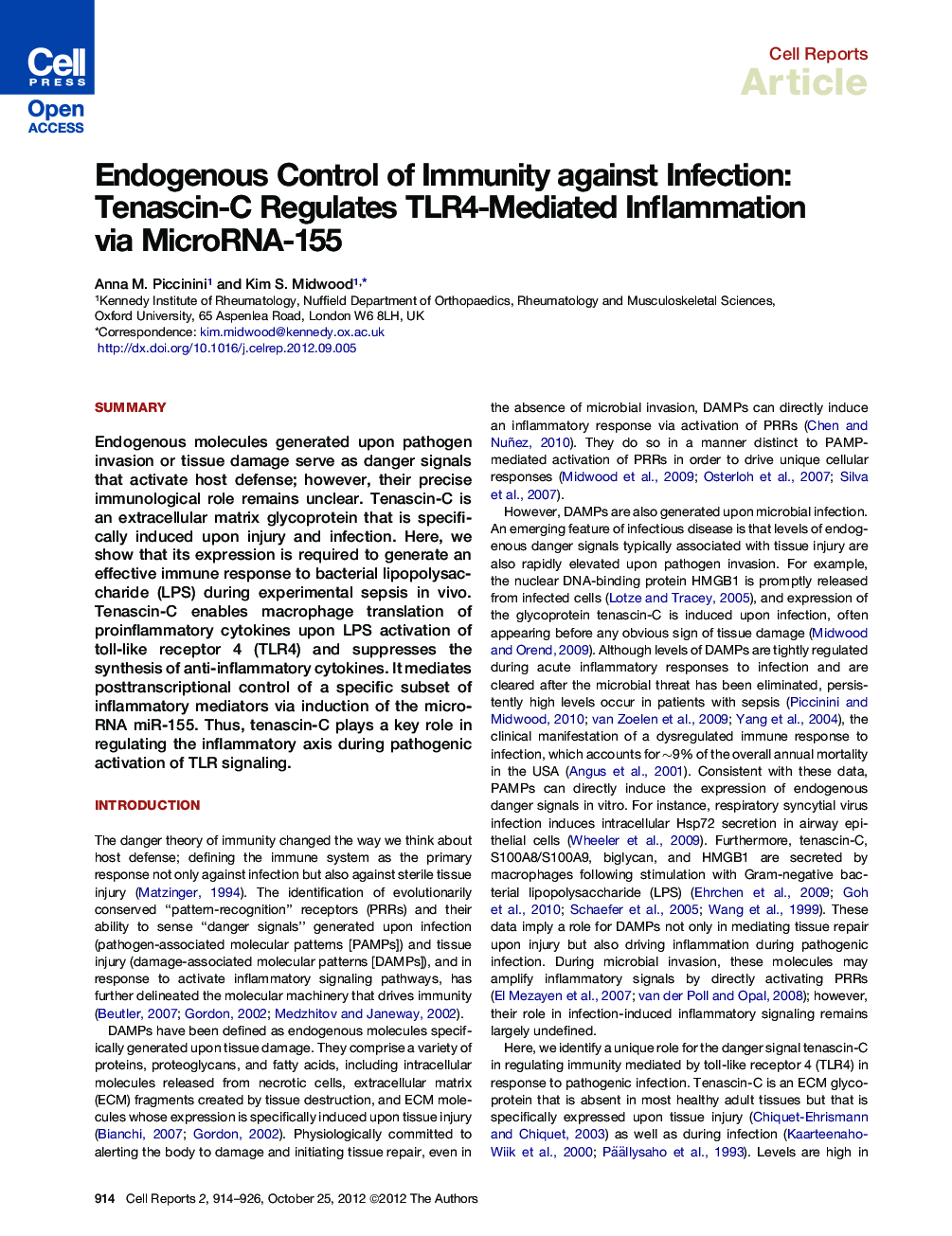| Article ID | Journal | Published Year | Pages | File Type |
|---|---|---|---|---|
| 2040402 | Cell Reports | 2012 | 13 Pages |
SummaryEndogenous molecules generated upon pathogen invasion or tissue damage serve as danger signals that activate host defense; however, their precise immunological role remains unclear. Tenascin-C is an extracellular matrix glycoprotein that is specifically induced upon injury and infection. Here, we show that its expression is required to generate an effective immune response to bacterial lipopolysaccharide (LPS) during experimental sepsis in vivo. Tenascin-C enables macrophage translation of proinflammatory cytokines upon LPS activation of toll-like receptor 4 (TLR4) and suppresses the synthesis of anti-inflammatory cytokines. It mediates posttranscriptional control of a specific subset of inflammatory mediators via induction of the microRNA miR-155. Thus, tenascin-C plays a key role in regulating the inflammatory axis during pathogenic activation of TLR signaling.
Graphical AbstractFigure optionsDownload full-size imageDownload as PowerPoint slideHighlights► Endogenous danger signals mediate effective immunity against pathogenic infection ► Tenascin-C is required to generate a proinflammatory response to LPS in vivo ► Tenascin-C post-transcriptionally regulates TNF-α production by macrophages ► Tenascin-C controls TNF-α translation by driving microRNA-155 expression
